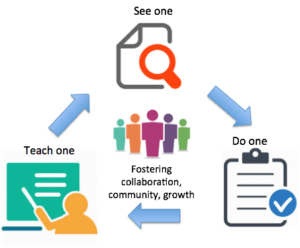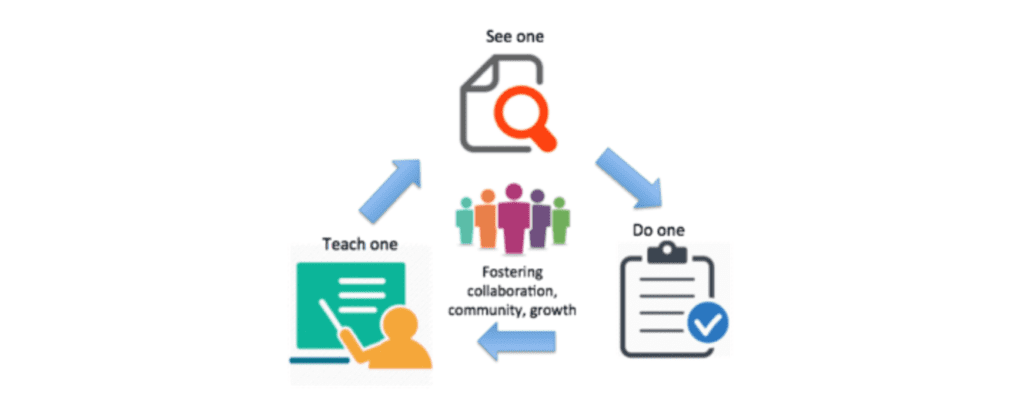“I hear and I forget; I see and I remember; I do and I understand.” – Chinese proverb
People learn by doing. This is an ancient idea, certainly not a new notion. It is in the doing that words on the page come alive and become relevant to us. The “teaching-hospital model” embraces this idea by requiring a teaching hospital to fulfill two missions – treat the sick and take students and teach them how to treat the sick.
So, how is this pertinent to LitheSpeed? At a time when our organization is disrupting itself as it experiments with Teal, aspects of this model seem directly applicable to how we operate. Like teaching hospitals, we need to provide our essential training and consulting services to our clients while we are educating our staff on what it takes to keep the organization running – from shepherding the sales pipeline, proposal writing, invoicing and other back office operations.
In offering this metaphor, we envision a model of learning-by-doing that includes trainers, consultants, operations and sales specialists within the organization working together to innovate, grow and engage both the internal community we belong to and the external community we serve. To that end, we offer the following recipe:

See one – You note an interest in a new skill/activity (e.g. help with invoicing), find a listed expert there, clear some space to experiment, and set a goal and timeline, preferably something tangible and relatively short-term (e.g. run at least five invoices over next month). You might schedule to see this process in action if you haven’t already (e.g. research existing documentation, consult invoicing experts, watch someone else train it).
Do one – Pair with the expert on round one to try the process with them at first. Next, do it on your own, and have them review a few times. Finally, run it completely solo. Get feedback and adapt after some reasonable, predefined test run.
Teach one – Once the new process is in place, teach it to someone who has never done it before. This could be a generator of internal brown bags at our All Hands; if you can explain the process to everyone else, then you demonstrably get it, and of course they also now know that you have that skill set as well. This could also be a more personal activity, depending on the depth of the experiment (e.g. a new training class might be better served by co-training it with someone else).
This diffusion of knowledge and continuity of experience is crucial to our growth.
Interested in learning more about opening your team to learning? Dive into the heart of team dynamics and facilitation techniques with Advanced Agile Coaching and Management, cohosted by The Improv Effect.

